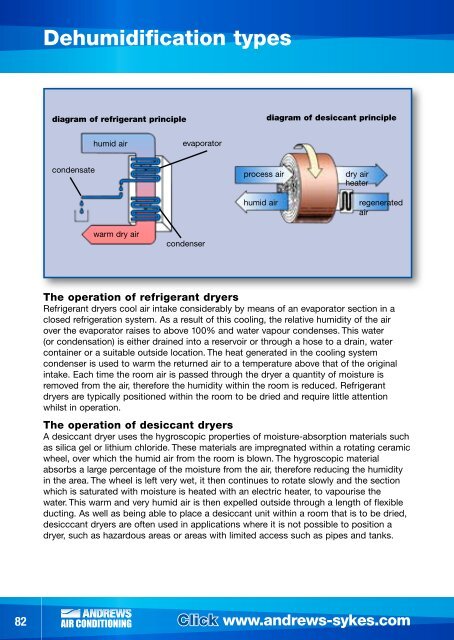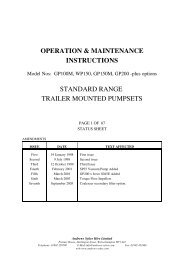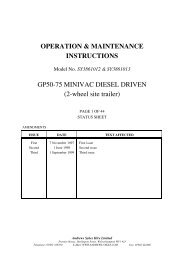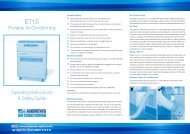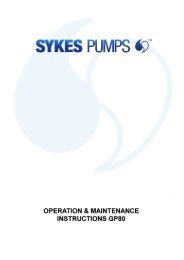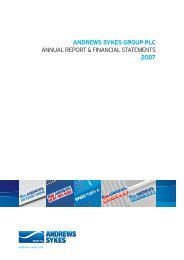Cooling & Heating - Andrews Sykes
Cooling & Heating - Andrews Sykes
Cooling & Heating - Andrews Sykes
Create successful ePaper yourself
Turn your PDF publications into a flip-book with our unique Google optimized e-Paper software.
Dehumidification typesdiagram of refrigerant principlediagram of desiccant principlehumid airevaporatorcondensateprocess airhumid airdry airheaterregeneratedairwarm dry aircondenserThe operation of refrigerant dryersRefrigerant dryers cool air intake considerably by means of an evaporator section in aclosed refrigeration system. As a result of this cooling, the relative humidity of the airover the evaporator raises to above 100% and water vapour condenses. This water(or condensation) is either drained into a reservoir or through a hose to a drain, watercontainer or a suitable outside location. The heat generated in the cooling systemcondenser is used to warm the returned air to a temperature above that of the originalintake. Each time the room air is passed through the dryer a quantity of moisture isremoved from the air, therefore the humidity within the room is reduced. Refrigerantdryers are typically positioned within the room to be dried and require little attentionwhilst in operation.The operation of desiccant dryersA desiccant dryer uses the hygroscopic properties of moisture-absorption materials suchas silica gel or lithium chloride. These materials are impregnated within a rotating ceramicwheel, over which the humid air from the room is blown. The hygroscopic materialabsorbs a large percentage of the moisture from the air, therefore reducing the humidityin the area. The wheel is left very wet, it then continues to rotate slowly and the sectionwhich is saturated with moisture is heated with an electric heater, to vapourise thewater. This warm and very humid air is then expelled outside through a length of flexibleducting. As well as being able to place a desiccant unit within a room that is to be dried,desicccant dryers are often used in applications where it is not possible to position adryer, such as hazardous areas or areas with limited access such as pipes and tanks.82 Click www.andrews-sykes.com


